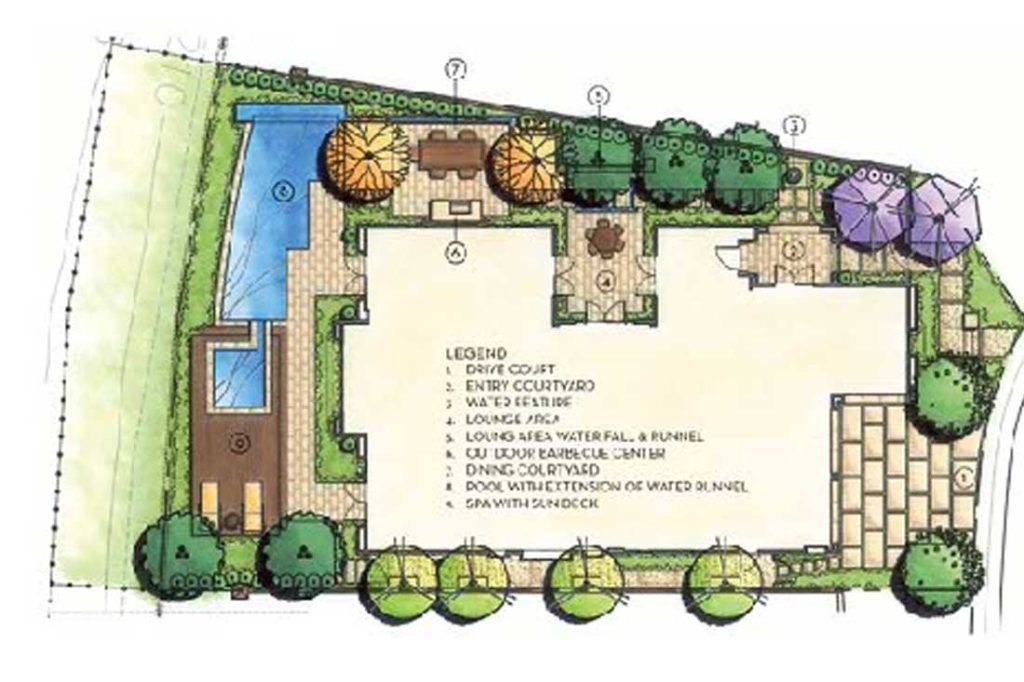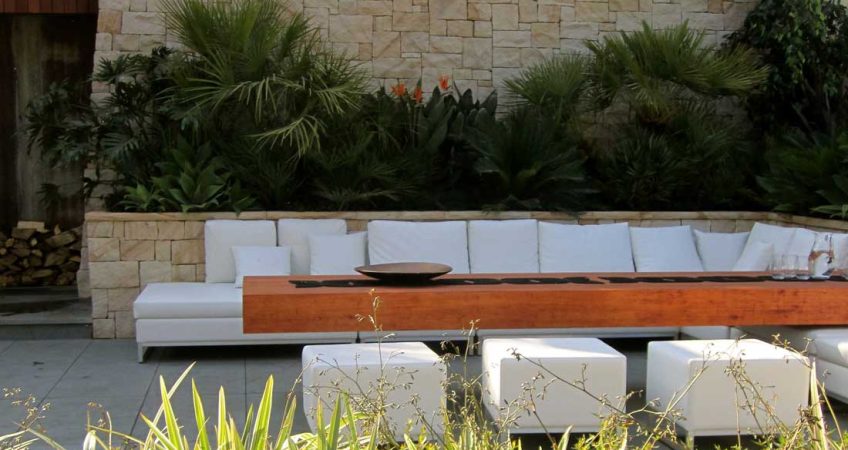Landscape design is an artful discipline that combines nature and culture, creating stunning outdoor spaces that are not only aesthetically pleasing but also functional. It’s a vital part of home improvement in New Zealand, offering homeowners the opportunity to transform their outdoor environment into a sanctuary that reflects their personal style and complements the architectural design of their homes.The concept of landscape design encompasses a broad range of elements, from the layout of hard landscape elements like paths, walls, and rockeries, to the softer parts of the landscape – the plants. Whether you’re interested in a modern garden complete with geometric patterns and clean lines, or a more traditional garden that teems with native planting, this article has some inspiration for everyone.We’ll delve into various aspects of landscape design, including basic landscape design principles, modern garden ideas, pool landscaping ideas, and gardening on a slope. We’ll also provide inspiration and advice for transforming both small gardens and larger outdoor spaces, whether it’s your front yard or backyard.So, whether you’re a seasoned home gardener, a landscape designer or architect, a council decision-maker, or a professional landscape expert, there’s plenty of valuable information to glean from this piece. Let’s dive into the fascinating world of landscape design in New Zealand.

The Basics of Landscape Design in New Zealand
Landscape design is a multi-faceted discipline that requires a deep understanding of several core principles to how designers create harmonious and functional outdoor spaces. To master the art of landscape design, one must first grasp these fundamental concepts.
Understanding Landscape Design Principles (Secrets of Landscape Architects and Landscape Designers)
Landscape design principles are the foundation upon which all great gardens are built. They guide the arrangement, selection, and combination of design elements, creating a balanced and visually pleasing outdoor space. Here are some of the key principles of landscape design:
Balance
Balance in landscape design refers to the equal distribution of visual weight in a garden. It can be symmetrical (mirror image balance) or asymmetrical (different elements creating balance).
Proportion
Proportion considers the relationship between elements of your landscape design, ensuring that all parts fit together seamlessly. This includes the size of the elements in relation to each other and the design as a whole.
Unity
Unity in landscape architecture and design means that all elements of the design work together towards a unified visual theme, such as “modern” or “cottage” designs. This is often achieved through repetition and consistency of a design’s character.
Transition
Transition in landscape design refers to the gradual change of elements within a garden. This can be achieved through a gradual increase or decrease in size, a shift in texture, or a change in colour among plants. It helps to create a smooth flow and movement, rather than a clunky flow, leading the eye from one area of the garden to another.
Repetition
Repetition involves the use of similar elements throughout the landscape design. This could be a repeating pattern of plants, shapes, colours, or textures. Repetition creates rhythm and consistency, providing a sense of familiarity and cohesion.
Contrast
Contrast involves placing elements that have opposing qualities next to each other to highlight their differences. This could be contrasting colours, textures, shapes, or sizes. While contrast can create a striking visual effect, it needs to be used carefully to avoid creating a chaotic and disjointed design.
Remember that while these principles provide a useful guideline, they aren’t strict rules. Feel free to experiment and let your creativity shine through in your garden design. A garden is never finished, so don’t be afraid to rip plants or hardscape elements out and replace them.
Hardscape vs Softscape Elements
In any landscape design, there are two primary components: hardscape and softscape elements.
Hardscape refers to the non-living, fixed features such as paths, walls, patios, and rockeries. Softscape, on the other hand, refers to the organic elements of the landscape – the plants and mulch. A successful landscape plan strikes a harmonious balance between these two elements, creating a cohesive and appealing design.
Successfully Planting in NZ Landscape Design
The “right plant, right place” mantra is a golden rule in landscaping. It’s about choosing plants that will thrive in their given location, taking into account various environmental factors.
Climatic Conditions
New Zealand’s climate varies across the country, so it’s important to choose plants that are suitable for your local conditions. For instance, coastal areas require plants that can withstand salty winds, while alpine regions need hardy species that can survive cold, harsh winters.
Some regions experience colder temperatures than others, depending on the altitude and how far south they are, meaning they’re further away from the equator. Rainfall amounts can also differ from one region to another.
Sunlight and Shade
Understanding the sunlight needs of each plant is crucial. Some plants thrive in full sun, others prefer partial shade, and some can grow in full shade. Position your plants accordingly to ensure they get the right amount of light.
Soil Type
Likewise, different plants have different soil requirements. Some prefer well-drained sandy soil, while others do well in clay soils. Test your soil to determine its type and amend it if necessary to suit your chosen plants.
Landscape Design Ideas for Different Areas of Your Home (Without Hiring A Landscape Architect)
When it comes to landscape design, different areas of your home demand different approaches. The front yard and the backyard, for instance, serve distinct purposes and thus require different design strategies.
Front Yard Landscape Design Ideas
The front yard is often what people first see when they approach your home. It sets the tone and creates the initial impression.
Goals of Good Front Yard Landscaping
Good front yard landscaping should enhance the curb appeal of your home, and make it welcoming. It should reflect your personal taste while also complimenting your home’s architecture. And it should draw visitors’ eyes towards the main entrance, making the journey from the gate to the door pleasant and easy.
Front Yard Design Ideas
There are various ways to make your front yard appealing and welcoming. For instance, you can use native plants to showcase New Zealand’s beautiful flora while supporting local biodiversity. You could opt for a low-maintenance design to save ongoing work and expenses.
You could also incorporate modern design elements like geometric shapes and clean lines for a contemporary look. A well-placed bench or water feature can add interest and create a focal point in your front yard.
Backyard Landscape Design Ideas
The backyard is typically a more private space, used for relaxation and entertainment. Thus, backyard landscape design is about creating a functional yet cosy haven where you can unwind, entertain guests, and enjoy outdoor activities.
Goals of Good Backyard Landscape Design
A good backyard landscape design should transform your outdoor space into a functional and relaxing area. It should cater to your lifestyle needs, whether that’s a space for entertaining, a play area for kids, or a tranquil garden retreat.
It’ll often include screening such as tall hedges to provide privacy for your family and friends to avoid the gaze of any unwanted spectators.
Backyard Design Features
There are many features you can incorporate into your backyard design. Outdoor seating areas, for instance, are great for entertaining or family gatherings. You could also consider a fire pit for cosy evenings, a water feature for a sense of tranquillity, or a vegetable garden for homegrown produce.

Conclusion
Landscape design is all about creating outdoor spaces that are not only visually pleasing but also functional and suited to your lifestyle. Whether it’s your front yard or backyard, each area offers unique opportunities for creativity and personal expression.
Remember, there are no hard and fast rules in landscape design. Just general design principles and garden elements which are like colours in your paint palette.
Feel free to experiment, innovate and most importantly, have fun with it. After all, your garden should be a reflection of you – your tastes, your needs, and your passions. So go ahead, let your imagination take the lead and create a garden that brings you joy and serenity.

